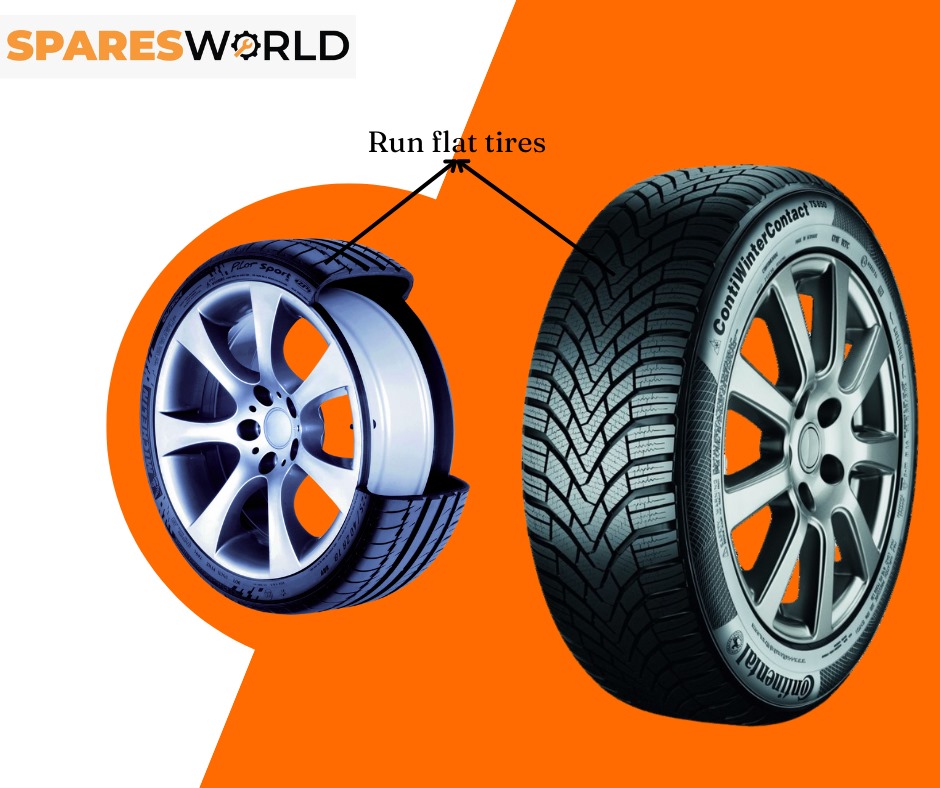What Are Run-Flat Tires?

Discover the revolution in tire technology that keeps you moving, even after a puncture.
Exploring the Technology Behind Run-Flat Tires
Run-flat tires are designed to resist the effects of deflation when punctured, allowing you to continue driving to a safe location or service center. The technology behind these tires involves reinforced sidewalls that can support the vehicle's weight even with loss of air pressure. This is achieved through the use of heat-resistant rubber compounds and robust internal structures that prevent the tire from collapsing.
The resilience of run-flat tires relies on either a self-supporting system, with thicker and stiffer sidewalls, or a support ring system, where a ring of hard rubber or another material supports the vehicle during a loss of pressure. These innovative designs ensure that, even after a puncture, a run-flat tire can travel a limited distance at a reduced speed, typically up to 50 miles at 50 mph, depending on the tire specifications.
Benefits of Using Run-Flat Tires on Your Vehicle
Run-flat tires offer several advantages for drivers. Firstly, they enhance safety by eliminating the need to change a tire in dangerous roadside situations. This is particularly beneficial on busy highways or in inclement weather conditions. Another significant benefit is the preservation of vehicle control after a puncture, which reduces the risk of accidents caused by blowouts.
Additionally, run-flat tires can contribute to weight and space savings, as they eliminate the need for a spare tire and the associated tools. This can lead to better fuel efficiency and extra storage space. Furthermore, the ability to continue driving after a puncture provides peace of mind for drivers, ensuring that they can reach a service station without the urgency of an immediate stop.
Comparing Run-Flat Tires with Standard Tires
When comparing run-flat tires to standard tires, there are key differences to consider. Run-flat tires are built with reinforced sidewalls or internal support systems, while standard tires rely solely on air pressure for support. In the event of a puncture, standard tires lose their shape and functionality, requiring immediate replacement or repair.
The difference in construction also influences the driving experience. Run-flat tires may offer a firmer ride due to their stiff sidewalls, which can affect comfort. Additionally, run-flat tires are often more expensive than standard tires, both in initial cost and when considering replacement, as they may not be repairable. However, the safety and convenience factors may offset the cost for many drivers.
Installation and Maintenance Tips for Run-Flat Tires
Installing run-flat tires requires attention to detail and an understanding of the vehicle's specifications. It is important to ensure that the tires are compatible with the vehicle's weight and performance requirements. Additionally, vehicles equipped with run-flat tires typically include a Tire Pressure Monitoring System (TPMS) that must be properly calibrated to alert drivers of pressure loss.
Maintenance of run-flat tires involves regular inspections for wear and damage, as well as maintaining proper tire pressure for optimal performance. It's also crucial to adhere to the speed and distance limitations after a puncture has occurred to avoid further damage to the tire or vehicle. Professional inspection after any loss of pressure is recommended, as internal damage may not be visible.
Future Trends in Run-Flat Tire Technology
The future of run-flat tire technology is poised for innovation. Advancements in materials and design aim to further improve the safety and performance of these tires. Researchers are working on new compounds to enhance flexibility and comfort, reducing the stiffness traditionally associated with run-flat tires.
In addition, we may see the integration of smart tire technologies, where sensors within the tires provide real-time data on tire health, pressure, and temperature. This will enhance the safety features of run-flat tires and allow for predictive maintenance. As the automotive industry moves towards electric and autonomous vehicles, the demand for reliable and low-maintenance tire solutions like run-flat tires is expected to grow.
Drop us a message from our facebook page or Chat us using the widget on the right to order TIRES for your car

 Loading..
Loading..